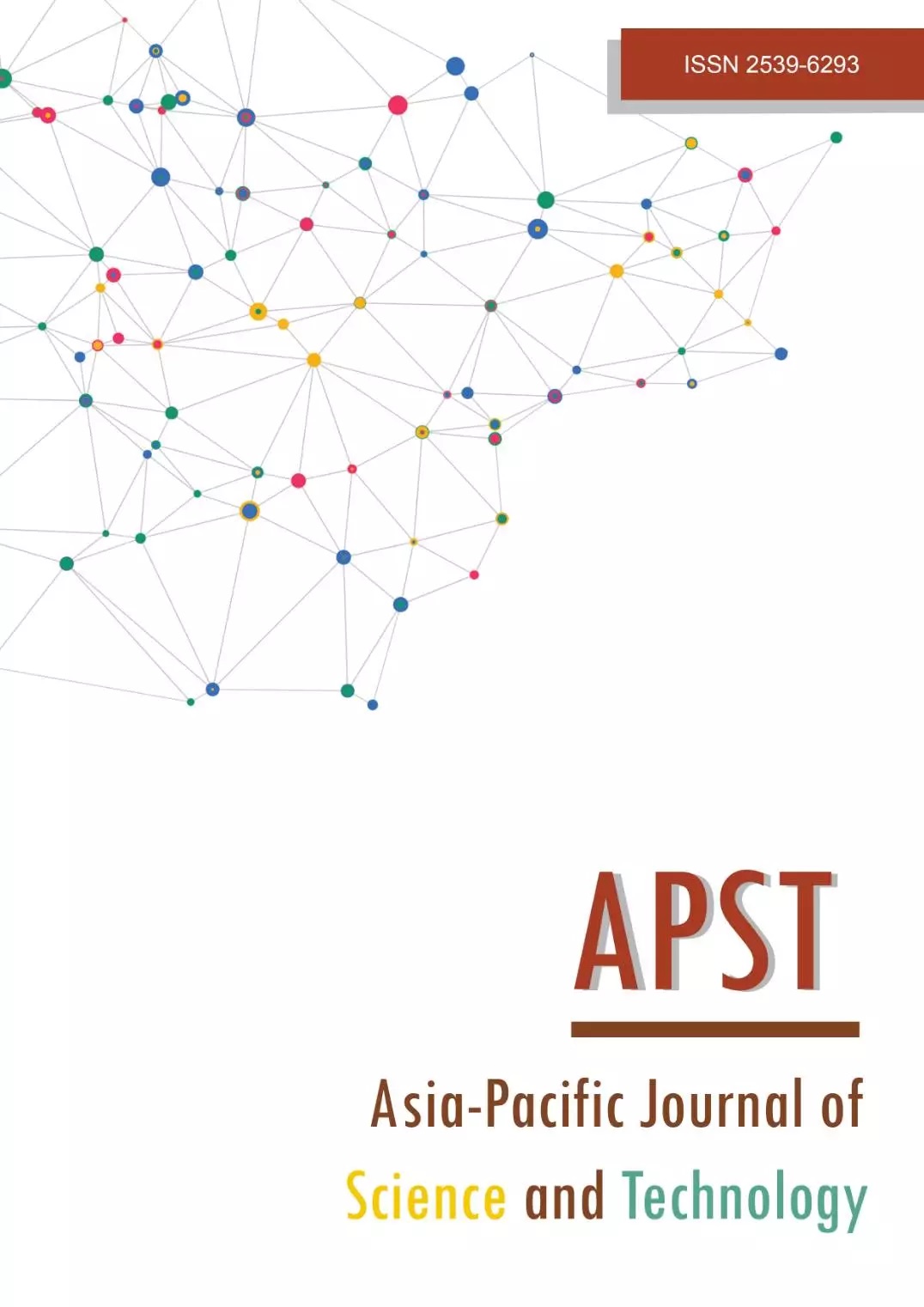Evaluation of physicochemical characteristic of rifampicin extemporaneous suspension in specific time and conditions
Main Article Content
Abstract
Rifampicin is one of the first line medicines for treatment of tuberculosis (TB). Some patients such as children cannot take the solid dosage form orally and need oral liquid preparations. In those cases, pharmacists prepare rifampicin extemporaneous suspensions. However, the stability of rifampicin extemporaneous suspensions in a tropical country such as Thailand has not been investigated. A lack of stability information means that the compounding pharmacist is responsible for ensuring the stability efficacy and safety of the suspension. Rifampicin extemporaneous suspension was prepared at 25 mg/mL and kept under 3 temperature conditions: refrigerated (7±3°C), room temperature and accelerated temperature (45±5°C). The color, pH and viscosity of the extemporaneous solution was recorded after 0, 7, 14, 30, 45 and 60 days and the rifampicin content were determined by HPLC analysis. There was no change in the color of suspensions stored at room temperature and refrigerated temperature, but the color did change under 45±5°C. The pH remained stable under all three conditions of storage. The suspensions decreased in viscosity as viscometer spindle speed was increased, and this was unaffected by the different storage conditions. All samples stored under refrigerated temperature and room temperature retained more than 90% of their initial rifampicin concentration for 60 days. However, under the accelerated temperature, only 19.51% of the initial concentration of rifampicin remained on day 60 (p<0.05). Thus, testing for stability at a range of temperatures is important when extemporaneously preparing pharmaceutical suspensions in tropical climates.
Article Details

This work is licensed under a Creative Commons Attribution-NonCommercial-NoDerivatives 4.0 International License.
References
Hassan BAR. Overview on pharmaceutical formulation and drug design. Pharm Anal Acta. 2012;3(10):1000e140.
Kesisoglou F, Panmai S, Wu Y. Nanosizing - oral formulation development and biopharmaceutical evaluation. Adv Drug Deliv Rev. 2007;59(7):631-644.
Glass B, Haywood A. Stability considerations in liquid dosage forms extemporaneously prepared from commercially available products. J Pharm Pharm Sci. 2006;9(3):398-426.
Kommanaboyina B, Rhodes CT. Trends in stability testing, with emphasis on stability during distribution and storage. Drug Dev Ind Pharm. 1999;25(7):857-868.
Jackson M, Lowey A, editors. Handbook of extemporaneous preparation: a guide to pharmaceutical compounding. 1st ed. London: Pharmaceutical Press; 2010.
Falconer JR, Steadman KJ. Extemporaneously compounded medicines. Aust Prescr. 2017;40(1):5.
Guillory JK. Handbook of aqueous solubility data by Samuel H. Yalkowsky and Yan He. J Med Chem. 2003;46(19):4213.
Sorenson B, Whaley P. Stability of rifampin in SyrSpend SF. Int J Pharm. 2013;17(2):162-164.
Chellini PR, Lages EB, Franco PHC, Nogueira FHA, César IC, Pianetti GA. Development and validation of an HPLC method for simultaneous determination of rifampicin, isoniazid, pyrazinamide, and ethambutol hydrochloride in pharmaceutical formulations. J AOAC Int. 2015;98(5):1234-1239.
Shayoub ME, Sami MA, Ali MS, Shaddad SAI. Evaluation of guar gum as suspension agent in comparison with xanthan gum using metronidazole benzoate as model of drug to estimate the effect of temperature and storage on its suspension ability. J Glob Biosci. 2015;4(6):2452-2458.
Bandy B, Walter PB, Moon J, Davison AJ. Reaction of oxygen with 6-hydroxydopamine catalyzed by Cu, Fe, Mn, and V complexes: identification of a thermodynamic window for effective metal catalysis. Arch Biochem Biophys. 2001;389(1):22-30.
Jin Q, Kirk MF. pH as a primary control in environmental microbiology: 1. thermodynamic perspective. Front Environ Sci. 2018;6:21.
Benslimane A, Bahlouli IM, Bekkour K, Hammiche D. Thermal gelation properties of carboxymethyl cellulose and bentonite-carboxymethyl cellulose dispersions: rheological considerations. Appl Clay Sci. 2016;132:702-710.
Dhiaa AH. The temperature effect of the viscositu and density of xanthan gum solution. J Eng. 2020;3(2):17-30.
Salim SN, Mohd Murshid MD. Gazzali AM. Stability of extemporaneous rifampicin prepared with X-temp® oral suspension system. J Pharm. 2021;1(1):54-62.


